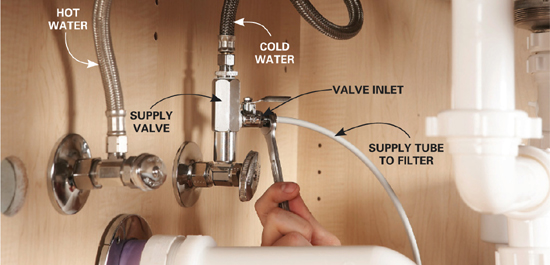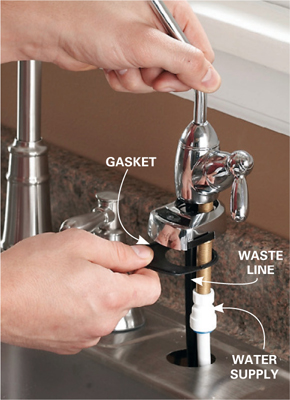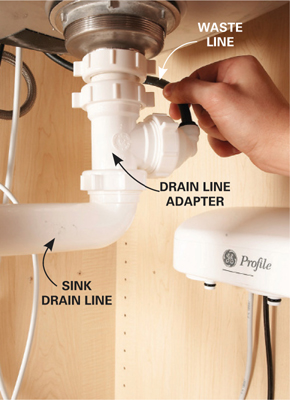
WHAT IT TAKES
Time: 2 hours
Skill level: Beginner

WHAT IT TAKES
Time: 2 hours
Skill level: Beginner
If you buy lots of bottled or filtered water or you’re worried about your tap water, a reverse-osmosis water filter can be a good investment. For $150 to $300, it can provide 10 or more gallons of drinking water a day. Replacement filters will cost $100 to $200 annually.
Reverse-osmosis filters remove many pollutants and chemicals, separating them from the water and then flushing them into the drain line. The purified water is then fed to the storage tank or the spout on the sink. However, reverse-osmosis filters remove the minerals like calcium and magnesium that give water its taste, so try a gallon (available at most supermarkets) before buying a system.
First, hang the filter assembly on the back or side wall of the sink base (or in the basement close to the sink location) at the height specified in the instructions. Turn off both the cold and the hot water shutoffs, and then install (after the cold water shutoff) the tee or saddle valve included with the unit.
Cut the color-coded water supply line so that it’s above the cabinet base and won’t get kinked. Fasten the plastic tubing to the supply valve (Photo 1).
Shorten the supply and waste lines to the faucet to eliminate excess tubing, but don’t cut the larger black waste line yet. Attach the lines to the fittings on the base of the faucet (Photo 2). The black waste lines feed through the base of the faucet to keep them above possible sink backups, but they have no connection to the supply.
Fasten the faucet to the sink, then install the drain-line adapter under the sink basket. Cut the waste line so that it flows downhill with no loops, then push it into the adapter (Photo 3).
Set the storage tank into place and install the final water line. Sterilize and fill the system according to the manufacturer’s instructions (Photo 4).

Push the plastic supply tube onto the supply valve, then tighten the nut a half turn past hand-tight.

Feed the water supply line and the two waste lines up through the hole in the sink and through the gasket and faucet base, then attach them.

Install the drain line adapter just below the sink and above the discharge from the disposer and/or dishwasher.